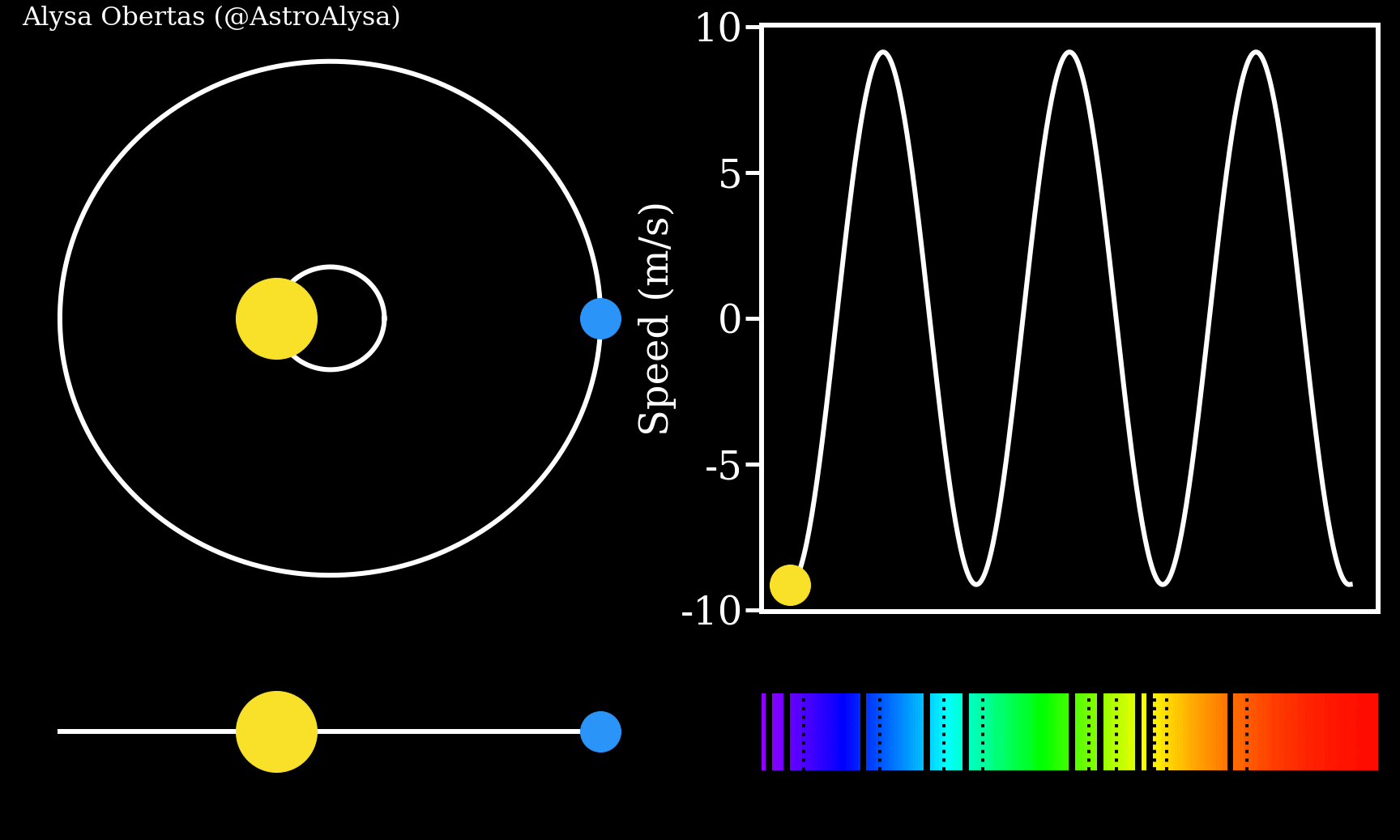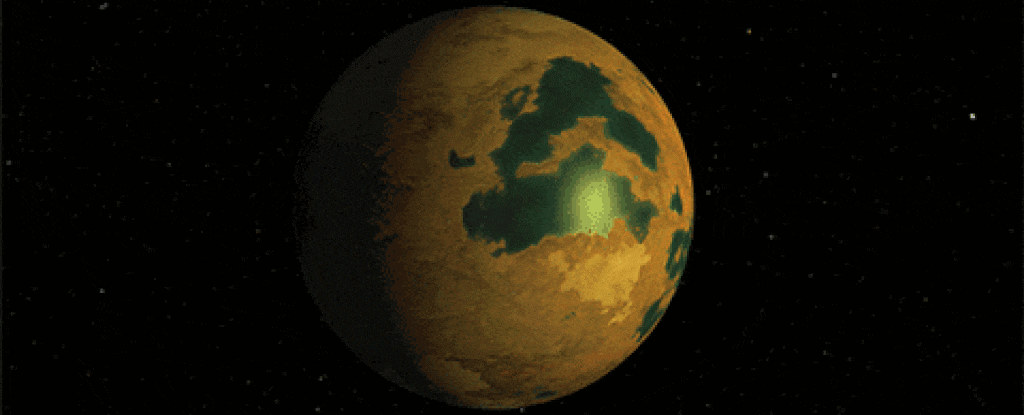A purported exoplanet orbiting a star in the constellation of Eridanus associated with Star Trek's fictional Vulcan homeworld may have just been a figment in the star's spectrum – a spectral specter.
Analysis of the discovery data on several exoplanets across the galaxy has revealed that several detections were actually false positives: light fluctuations emitted by the star alone, rather than an interaction with an orbiting exoplanet.
So hopes of a Vulcan planet have – at least for now – been dashed, but it's a result that should produce more robust exoplanets in the future.
The results have been accepted into The Astronomical Journal and are available on the preprint server arXiv.
The discovery of the exoplanet was announced in 2018: a world named 40 Eridani b, orbiting the star 40 Eridani A, a rocky super-Earth going around the star once every 42 Earth days or so.
It was discovered based on a property known as radial velocity, a faint push-pull evinced by fluctuations in the wavelength of light coming from the star.
A star with planets around it is not unaffected by the gravitational effects of planetary orbits. The bodies orbit, not one around the other, but both around a mutual center of gravity.
This means the star sort of wobbles slightly on the spot as the exoplanet moves around it; this can be detected in its light.
Any light emitted from a star or part of a star moving towards us is compressed slightly, shifting towards the blue end of the spectrum. Light emitted from something moving away from us lengthens slightly, shifting towards the red.
When caused by an exoplanet, this can be detected as the entire stellar spectrum moving slightly to and fro on regular timescales.

But it's not always easy to tease an exoplanet out of this apparent wobble. If there's any activity on the surface of the star – bright spots, or star spots – they'll produce wobbles in the spectrum, too, with a periodicity consistent with the star's rotation, as they rotate into and out of view.
And this is where we run into problems with 40 Eridani b.
The orbital period of the putative exoplanet was very close to the star's predicted rotation period, somewhere between 37 and 43 days.
At the time, the researchers said that it was possible that what they interpreted as an exoplanet signal could have been a rotation signal but could not obtain an accurate rotation period for the star.
Since then, other astronomers have taken a closer look. A 2021 paper that used a newly developed pipeline to determine radial velocity signals found that 40 Eridani b's detection was a false positive. A 2022 paper was unable to draw a conclusion.
Now, a team led by physicist Katherine Laliotis from Ohio State University has taken a closer look at 40 Eridani b, and other stars identified based on radial velocity, and discovered that a false signal is likely.
Several periodic signals they found in the star, they said, are in perfect agreement with stellar activity, such as magnetic cycles and stellar rotation, while others can't be validated because the star's region of space can't be observed for a significant portion of the Earth year.
"We therefore," they write in their paper, "classify this as a false positive signal."
They also found several other exoplanets that are also likely ghosts in the data. Radial velocity data interpreted to derive super-Earth exoplanets HD 20794 c and HD 85512 b were also false positives generated by stellar activity, the team reports, and gas giant HD 114613 b also looks dubious.
On the other hand, the researchers were able to identify two new candidate exoplanets to be followed up with further observation and analysis to determine their nature.
So, swings and roundabouts; farewell Vulcan, hello HD 192310 RV Signal IV and HD 146233 RV Signal III (they'll probably come up with catchier names later if the exoplanets are confirmed).
These results suggest that, as we obtain more data and more detailed data, it's worthwhile to revisit older, potentially ambiguous detections to clarify the observed signals and ensure our exoplanet detections are as clear as possible. In the process, we can also learn a lot about stellar activity.
"We expect the detection and characterization of Earth-analog planets to be an exceptionally difficult undertaking due to the challenges presented by observational constraints, instrument systematics, and, most importantly, the variability of the stars themselves," the researchers write.
"Dedicated, high cadence, high precision radial velocity monitoring will enable the characterization and potentially mitigation of stellar variability signals on time scales of hours to years alongside the detection of additional, currently unknown planetary companions.
"Knowledge of how to correctly model and remove signals of both natures will be crucial for any future efforts to measure precise masses for Earth-analog planets."
Hear, hear.
The team's research has been accepted into The Astronomical Journal and is available on arXiv.
